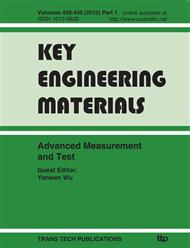p.1042
p.1048
p.1052
p.1057
p.1063
p.1069
p.1075
p.1081
p.1087
A Case Study on the Distributed Databases Using a Hybrid Rough Sets Method
Abstract:
With the developing of Distributed Database technology, fuzzy query of Distributed Database has been playing an important role in the information query. Raising query speed and precision ratio is always the main topic of information query. In this paper, a new type of information query system--Distributed Database system is designed with rough set theory and fuzzy set knowledge. A new information query method is advanced and the architecture of the system and its key algorithms are given. Main characteristic of the research achievement is that query algorithm’s time complexity decreases with the increase of amount of information and relates to the only amount of index words. Results show that it is an effective method with which a system for fuzzy query is implemented.
Info:
Periodical:
Pages:
1063-1068
Citation:
Online since:
June 2010
Authors:
Price:
Сopyright:
© 2010 Trans Tech Publications Ltd. All Rights Reserved
Share:
Citation:


